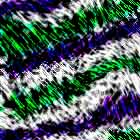Source: Technologiy Horizons
Plans to construct Europe’s most intense terahertz (THz) radiation source to further development of cancer research are underway at the University of Liverpool.

Building a THz beamline to target cancer
Physicists will construct an ultra-high intensity THz beamline and attempt to destroy skin cancer cells specially grown in a new tissue culture facility. The experiments will help scientists understand how to use this technology in future treatments for the disease in humans.
The THz beamline, funded by the Northwest Regional Development Agency (NWDA) through its North West Science Fund, will be developed using the prototype Fourth Generation Light Source (4GLS) being constructed at CCLRC Daresbury Laboratory, which will be used to develop light sources used in X-ray technology, laser studies and radiation sources.
Physicist, Professor Peter Weightman, said: “The prototype 4GLS facility is based on an Energy Recovery Linear accelerator. The energy produced by firing electrons around this accelerator will partly be used to power the THz beamline, which will link up to a tissue culture facility developed with scientists at the University of Nottingham.
“The culture facility will be used to grow skin cancer cells and the THz radiation will target the source of the cancer. THz is absorbed by water and cancer cells retain water, so the THz radiation should be consumed by the cell and kill it off at the source.”
Terahertz radiation has also been used in the detection of concealed weapons, explosives and drugs as it has the ability to penetrate a variety of materials such as clothing, paper, cardboard, wood, masonry, plastics and ceramics. THz radiation can also pick up on vibrations and rotations of molecules and has been useful in identifying molecules floating in space.
The team at Liverpool hope to develop these applications using the most powerful source of broad band terahertz available in Europe - a thousand times more powerful than current laboratory sources.
This will be the first time THz technology has been used on cancer cells. It will also be used to characterise genetic material; THz radiation has the capability of identifying mutations in DNA, which could help medics identify pharmaceutical therapies that will be compatible with individual patients’ DNA information.
The THz beamline will be fully operational in autumn 2007.

